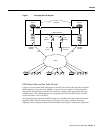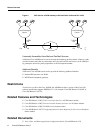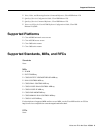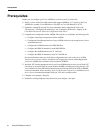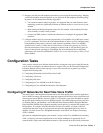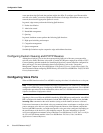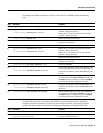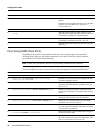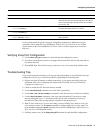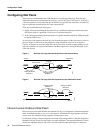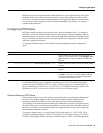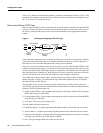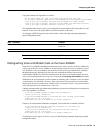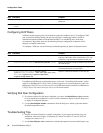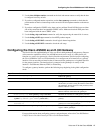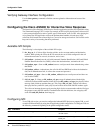
Configuring Voice Ports
Voice over IP for the Cisco AS5800 11
For more information on specific voice-port configuration commands or additional voice-port
commands, refer to either the Cisco IOS Release 12.0(3)T Voice over IP for the Cisco AS5300
feature module or the Cisco IOS Release 12.0 Voice, Video, and Home Applications Command
Reference..
Verifying Voice Port Configuration
• Use the show voice port command to verify that the data configured is correct.
• If you have not configured your device to support direct inward dial, dial in to the router and see
if you have dial tone.
• Enter DTMF digit. If the dial tone stops, you have two-way voice connectivity with the router.
Troubleshooting Tips
If you are having trouble connecting a call, and you suspect the problem is associated with voice-port
configuration, you can try to resolve the problem by performing the following tasks:
• Ping the associated IP address to confirm connectivity. If you cannot successfully ping your
destination, refer to the “Configuring IP” chapter in the Cisco IOS 12.0 Network Protocols
Configuration Guide, Part 1.
• Check to see that the VFC has been correctly installed.
• Use the show dial-shelf command to see if the VFC is operational.
• Use the show vrm vdevices summary command to verify that you have voice devices available.
• Use the show isdn status command to view layer status information. If you receive a status
message stating that Layer 1 is deactivated, make sure the cable connection is not loose or
disconnected. (This status message indicates a problem at the physical layer.)
• With T1 lines, check to see if your u-law setting is correct. With E1 lines, check to see if your
a-law setting is correct. Use the cptone command to configure both a-law or u-law values. For
more information about the cptone command, refer to the Cisco IOS Release 12.0(3)T Voice over
IP for the Cisco AS5300 feature module.
• If dialing cannot occur, use the debug isdn q931 command to check the ISDN configuration.
10
Router(config-voiceport)# timeouts interdigits seconds
Specifies the number of seconds the system will wait
(after the caller has input the initial digit) for the caller to
input a subsequent digit. Valid entries for this command
are from 0 to 120.
11
Router(config-voiceport)# timeouts ringing
{seconds|infinity}
Specifies the number of seconds the system will continue
to ring the destination if there is no answer.
12
Router(config-voiceport)# timeouts wait-release
{seconds|infinity}
Specifies the wait release timeout duration in seconds.
13
Router(config-voiceport)# translate {called
number|calling number}
Defines translation rules pertaining to either the called or
calling numbers.
Step Command Purpose



